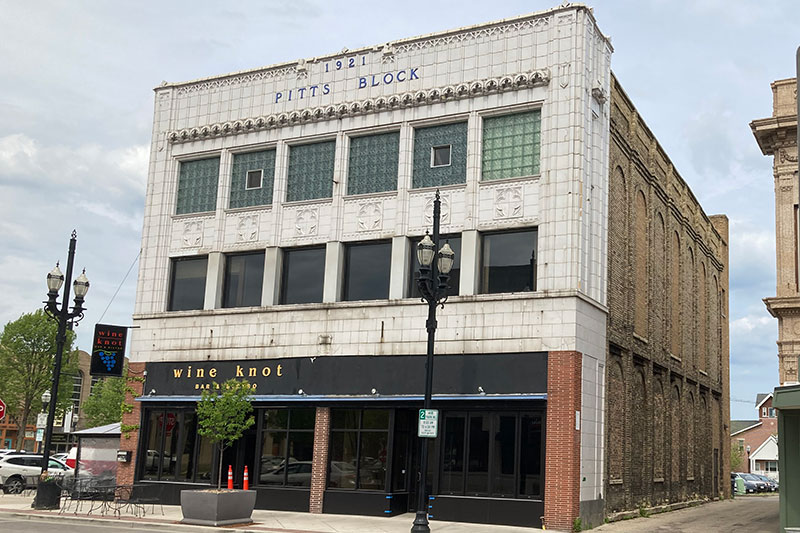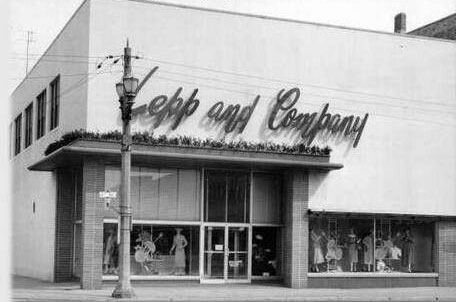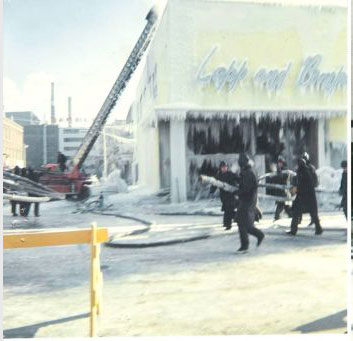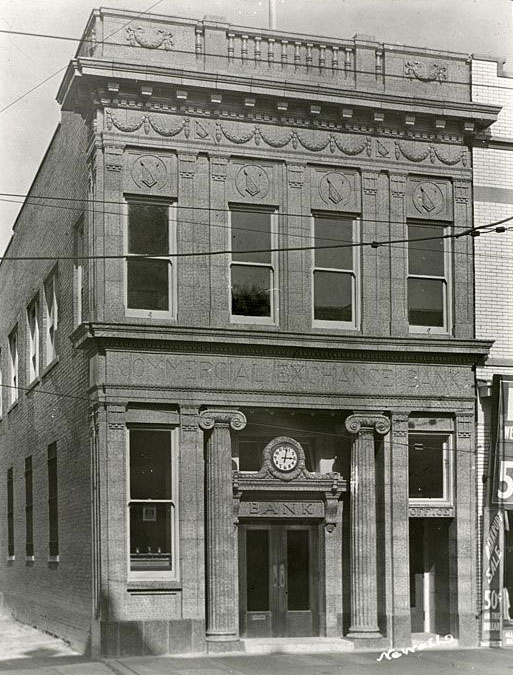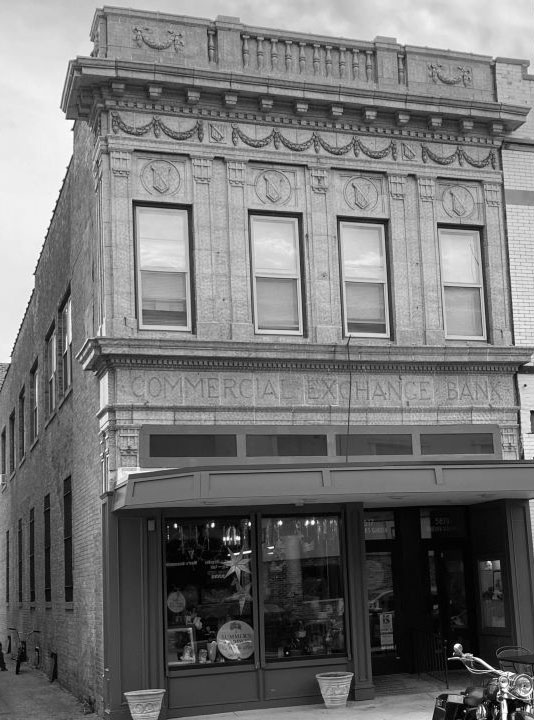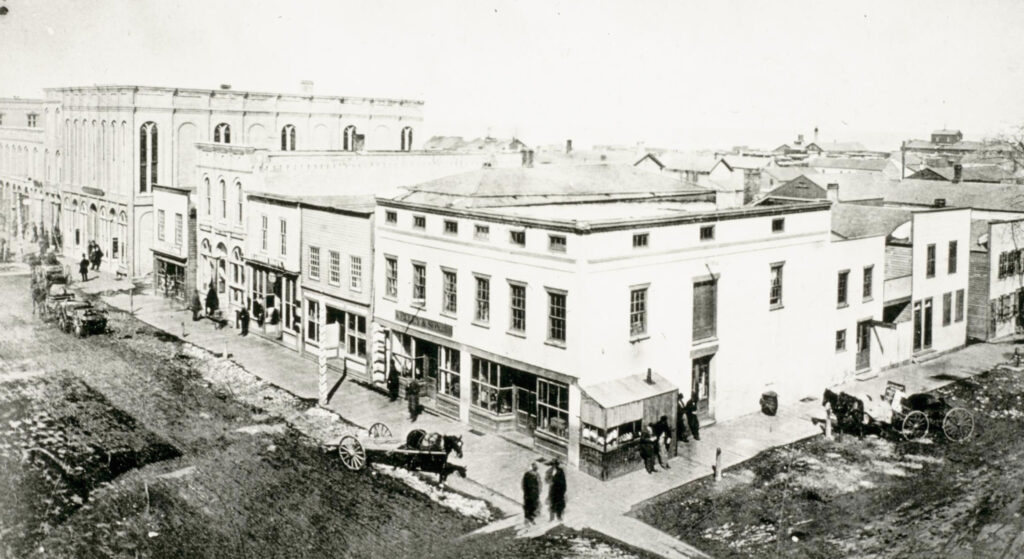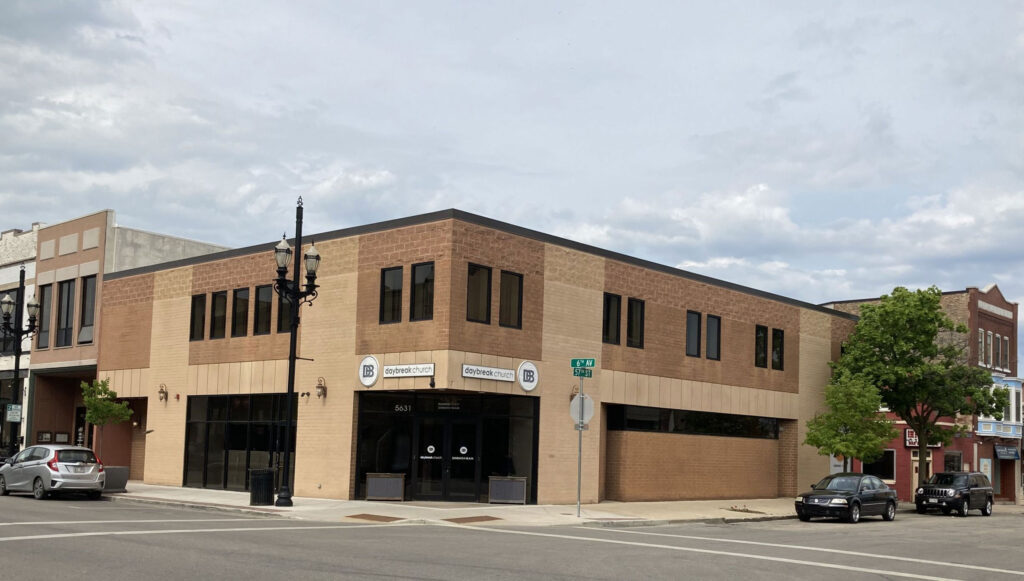Note: This is the second in a reoccurring series about the history of Kenosha’s downtown buildings and commercial areas. We launched this series in January with the 5500 block of Sixth Avenue on the east side.
Like the previous installment, we’re taking a walk around the block. We’ll start at the southeast corner of Sixth Avenue and 56th Street, but there’s a twist. The building that’s on that corner today, Wine Knot, didn’t used to be on the corner. Wait. What was that? Ever wonder why that block begins with a 5611 address? That’s because there used to be two other buildings closer to the corner and facing Sixth Avenue.
In the late-1890s, the corner building, then 200 Main Street or 5601 Sixth Avenue, was Isermann Brothers Clothes. Isermann Brothers occupied the spot until the mid-1910s before moving just west to Market Square and eventually into the newly-constructed Isermann Building at 614-16 56th Street. The Elite Confectionery took over the Isermann space from 1916 to 1927.
Also part of the same building was the 5603 address, which housed Galles’ Saloon from 1906 to 1918, when Prohibition turned it into a soft drink emporium. After that, a couple of restaurants operated there, Georgas in 1920 and the Market Square from 1925-27, followed by Saltzstein Jewelers in 1929, the State Lunch in 1933, Robert’s Cocktail Lounge in the late-1940s and one of the Sharkey’s Tavern locations in the early-1950s.
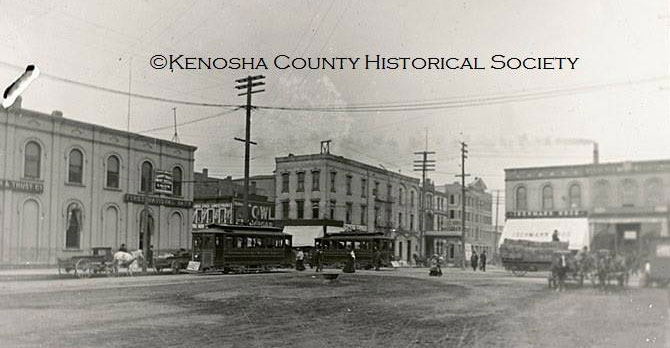
Sometime after 1927 but before 1937, the building seems to have been partially renovated, at least the corner portion, which became a Walgreens. Walgreens lasted on that corner until 1939 or 1940. The property sat vacant during World War II and was then occupied by the Koffee Kup restaurant between 1945 and 1950.
Lepp’s Furriers and Clothing took over the corner space in the early 1950s. Lepp’s, founded in Kenosha in 1902 by Morris David Lepp and also known as Lepp & Company Women’s Clothes, operated out of 1328 50th Street in the late 1930s and then 2906 Roosevelt Road in the early 1940s. The family operated both the Kenosha store and a Milwaukee branch. The Milwaukee store closed in 1958 when the family opened in the newly-built Elmwood Plaza on Durand Road in Racine. Meanwhile, the Downtown Kenosha store got a complete renovation in 1962 to coincide with the company’s 50th anniversary.
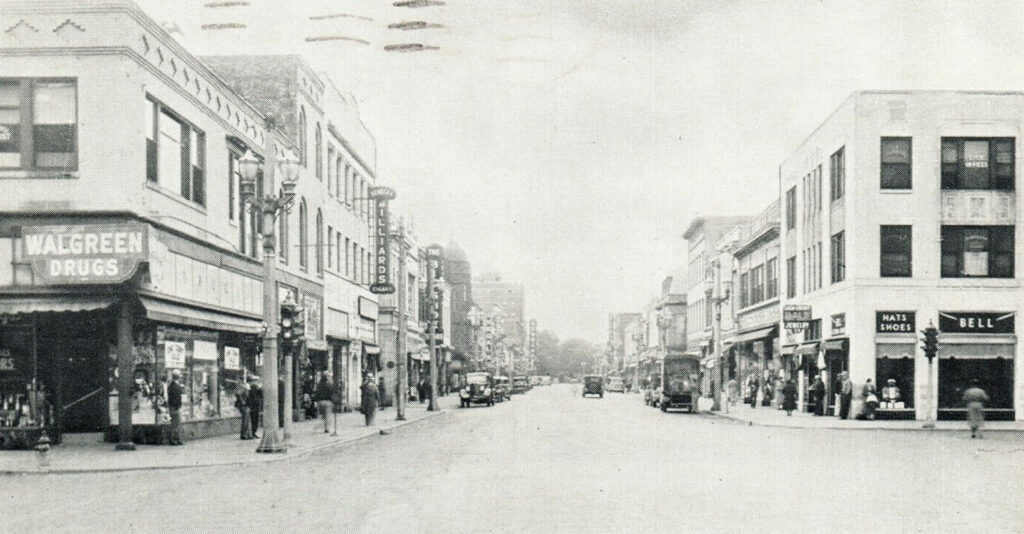
Next door to the Lepp Building was the Andre Building at 5605-09 with three storefronts. The Schwartz Fur Shop operated at 5605 between 1929 and 1933. At 5607 was a series of cigar stores between 1906 and 1931, followed by the Goody Shop Confections in 1945 and Irving’s Furs between 1950 and 1954. The 5609 storefront housed a restaurant in 1906, Western Union from 1908 to 1918, Newark Shoes from 1921 to 1933, the Ellis Hat Shop in the late-1930s, Nehslen’s Sporting Goods throughout the 1940s, Greenberg Ladies Wear from 1950 to 1963 and later the Villnow Insurance Agency.
Now, walking south a little, we’re at the current corner building, the Pitts Block at 5611-15. The Pitts Block, with 11,613 square feet of space, has a very long history. It was first built around the time of the Civil War and was known as Simmons Hall. Simmons Hall is listed by the Kenosha City Assessor as 1880 construction, but it’s older than that. The building is pictured in a July 4, 1868 parade photo. Church records from Kenosha’s First Unitarian Society also indicate that its 1865-68 services may have been held upstairs in Simmons Hall. Upstairs was also the first home of the Kenosha College of Commerce, which later moved to a new building at Sheridan Road and 56th Street. Downstairs, the building was home to a store for dry good merchant Rouse Simmons, brother to mattress magnate Zalmon Simmons.
Between 1906 and 1920, Joseph A. Pitts Wallpaper & Paints shared the 5611 Simmons Hall address with a series of billiard halls. Pitts retired in 1921, the same year as a major renovation of the building that is now known at the Pitts Block. Although details are sketchy, our best guess is that the inside was either gutted or spiffed up, and a new front façade was constructed. In a great example of history in plain sight (thanks here to the Kenosha History Center), the south exterior wall of Simmons Hall was retained, with the windows getting bricked in. That wall is visible today in the alley between Wine Knot and A Summer’s Garden Florist. It’s the area that Wine Knot sometimes uses for additional outdoor dining.
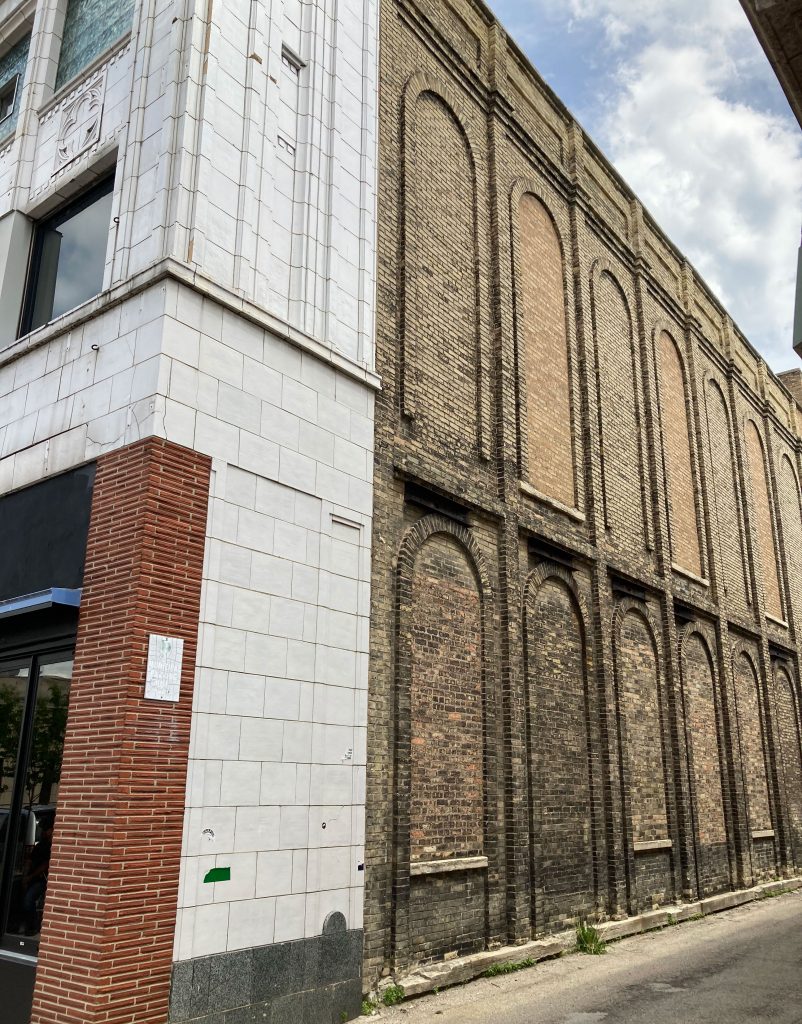
The 5611 address in the newly-renovated building housed Union Woolen Mills from 1921 to 1927, and they too, shared the address with other billiard operations. A sporting goods store opened in 1931, but the Depression led to several years of vacancies before the New French Chocolate Shop opened in 1937. The chocolate shop was replaced by a couple of taverns during World War II, Dickelman’s Toy & Tog Shop through most of the 1960s and 1970s and Julie’s Gift Shop in the early 1980s. Wine Knot, a wine bar/restaurant, opened in the 5611 space in 2004.
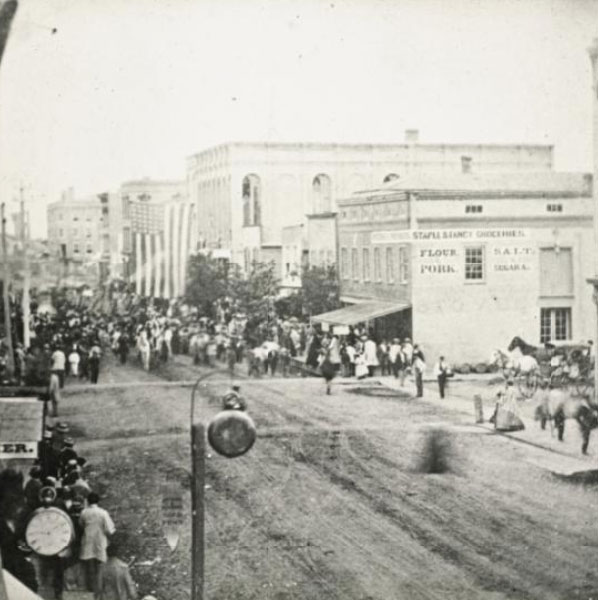
Shortly after midnight in the early-morning hours of Jan. 31, 1963, Kenosha policeman Robert Huth noticed smoke coming out of the Lepp store. He notified fellow officer Robert Hafner, who was across the street, and the two men initiated a building check. Seeing additional smoke originating in the Greenberg store at 5609, they called in the Kenosha Fire Department at 12:24 a.m. It was already too late.
A fast-burning fire wound up doing $500,000 in damage that destroyed Lepp & Company at 5601, Greenberg Ladies Wear at 5609 and Dickelman’s Toy & Tog Shop at 5611. It was the largest property-damage fire in Kenosha history, even surpassing the Petit Malt House blaze on March 17, 1914, a few blocks away at Eighth Avenue and 57th Street.
The 1963 fire, which apparently started in the Greenberg basement, quickly spread to the second floor and then to both adjoining buildings. Combatting the fire was complicated by brutal winter-weather conditions that froze or broke several downtown hydrants. An aerial ladder that had been pouring water into Lepp & Company from above froze into place. Later in the day, the fire department deployed a crane in an attempt to lift a large safe containing business records out of the Lepp basement.
All three buildings were eventually restored. The gutted Lepp & Company building came down after the fire and was replaced with a newer structure, known also known as the Lepp Building. The business moved into a temporary space at 5800-04 Sixth Avenue, where the Olive Tree Restaurant is today. Lepp then moved back to 5601 in 1964 when the new building was completed. Judging from period photos, the 1964 remodel retained most of the exterior walls but added a new façade and sidewalk overhang. Meanwhile, Lepp’s Elmwood Plaza store remained open until 1982 when it moved into Regency Mall. The Kenosha store closed in 1986, with the Regency Mall location shutting down in 1992.
The Lepp & Company site stayed vacant for several years before the Seebeck Gallery opened in 1992. In 1998, Seebeck’s moved to Highway 50 in Pleasant Prairie and subsequently added a satellite location in downtown Racine. Seebeck then lost its lease in Pleasant Prairie, vacated the Racine location and moved back downtown to 5702 Seventh Avenue in 2018.
In 1999, the city tore down both the Lepp Building and the Andre Building, along with another structure around the corner (more on that later). The three razed buildings allowed the city to widen 56th Street east of Sixth Avenue and to install the streetcar track median. That project also aligned the southern corners of the Market Square intersection for the first time.
Back to Pitts Block. At 5613, another series of billiard parlors operated between the late 1920s and the late 1930s. The 5615 storefront housed English Meats around 1906, the Vogue Boot Shop in 1920, the Smart Shop Ladies Wear store from 1921 to 1929, the Goodman Clothes Shop around 1931 and Hoffman’s Radio & Appliance (previously Paramount Radio and later Hoffman’s Records) from 1937 to about 1960 when the store moved south a block. More recently, 5613 has housed a couple of vintage clothing dealers or consignment shops.
The next building south is the classic Commercial Exchange Bank Building at 5617. The 4,312 square-foot building was constructed in 1878, and, pay attention here, this is confusing. In 1905, the Schmitt Brothers Saloon was located at 5617 Sixth Avenue, and the bank was at 5701 Sixth Avenue in an iconic domed building first known as the Dan Head Company Bank. When Prohibition began in 1921, Schmitt Brothers transitioned to soft drinks for a couple of years before the Merchant and Savings Bank moved into the 5617 space. When prohibition ended, Schmitt Brothers moved into 5701. The saloon and bank switched places. Yes, that’s right, and special thanks to Kenosha History Center for unraveling that mystery. Merchant and Savings Bank was replaced by Kenosha Building & Loan from 1927 to around 1955, Irving’s Furs & Fashions in 1959, Ventura Jewelers in 1966, Barbie Bazaar Periodicals in 1998 and today, A Summers Garden Florist.
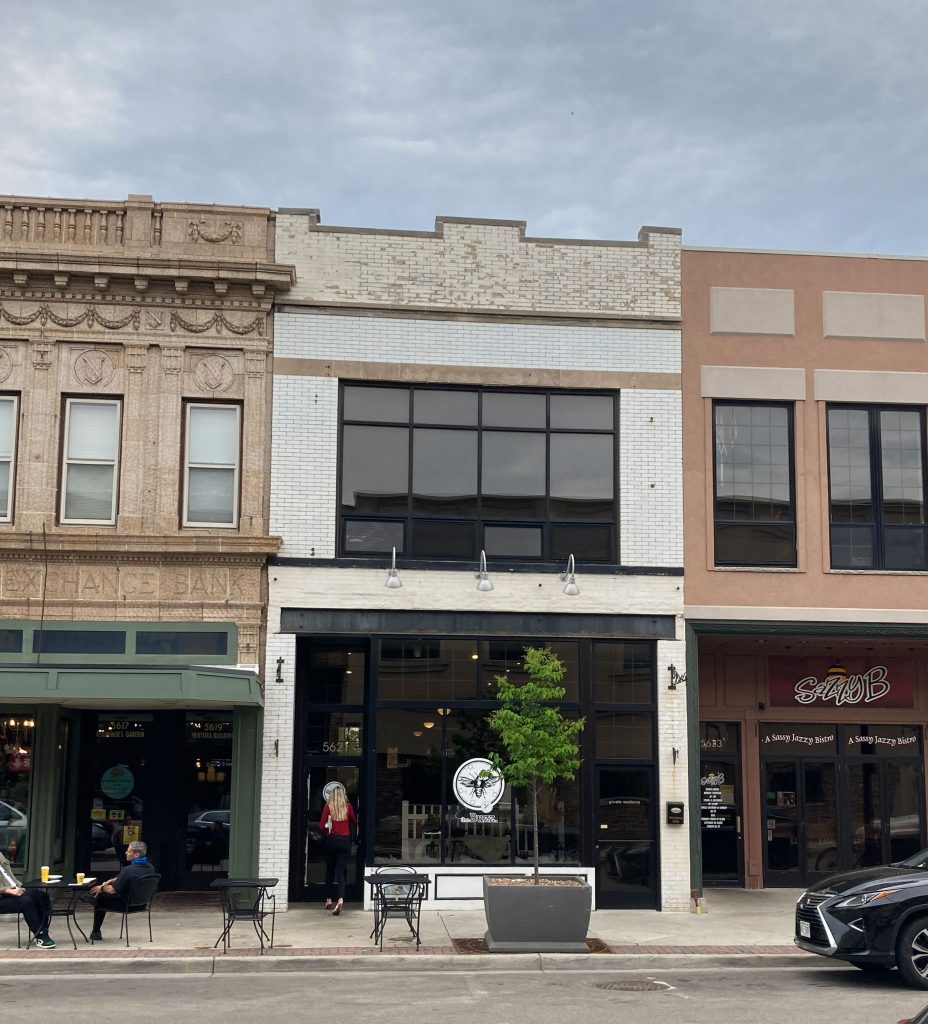
The same year that the bank was built, another building was constructed right next door at 5621, this one just slightly smaller at 4,116 square feet. The latter building housed the Vollmer Saloon from 1906 to 1912 and the Zeff Saloon between 1916-18. The Quality Shop Ladies Furnishings store followed from 1920-23, Broadway Styles Ladies Furnishings in 1925, Anthony Kubec Ladies Wear briefly in 1929, Holleb’s Women’s Clothes from 1950-54, Local Loans and Freedom Finance in the1970s, the Kenosha Word of Faith Center in the late 1980s the St. Peter’s Temple Church of God in the mid-1990s and today, The Buzz Café.
Moving south, the next building is 5623, built in 1920 with 3,920 square feet of space. Kubec Dry Goods operated here from 1906 to 1928, followed by Stephan-Joseph Furniture in 1927, The Big Shoe Store from 1929 to about 1954, Irving’s Furs & Fashion in 1972, Elegance at Large Clothes in 1987, Hydenseec Antiques in 1996 and today, Sazzy B.
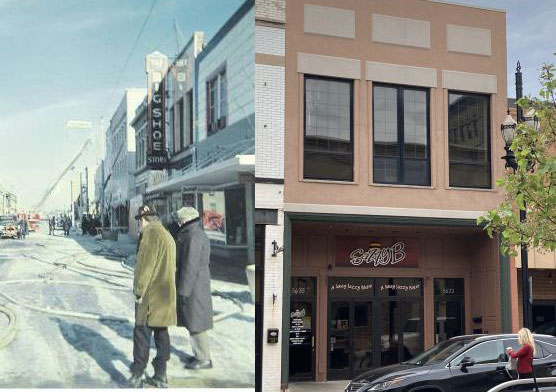
The building that once occupied the 5625-5631 site prior to 1974 is no longer there. It was known as the Orla Calkins Building, which Calkins purchased in 1878. When Calkins bought it, the building was at least 10 years old, since it was pictured in the same July 4 parade photo as Simmons Hall. When it stood, the 5625 address housed Dave’s Clothing from 1916 to 1931, an early version of Crystal’s Clothing in the mid-1930s, Epstein’s Store for Men from 1937 to 1950, Ruffalo’s Clothing in the late-1950s, Irving’s Furs & Fashions in the late-1960s and Jensen’s Shoes in 1972. Calkins, who owned more than a dozen Kenosha buildings, donated the Abraham Lincoln statue in Library Park to the city in 1909, just before he died.
Next door at 5627 was a barber shop around 1910, Lebersohn’s Ladies Furnishings between 1918-23, the Leader Store from 1925 to 1933, Dorman’s Women’s Clothes in 1941, Schwartz Furs from 1945 to 1954, a general merchandize store and Frank’s Discount Center in the late-1950s and early-1960s and then Merle’s Cosmetic Studio in the late 1960s.
The third of the four storefronts at the Calkins Building was 5629, and it housed the Philip Harman Saloon and Restaurant for 10 years between 1906 and 1916, followed by a year or two as Pierce’s Saloon and the Hop Wong Chinese Restaurant. Conforti Tailors was also in the building for many years. The final space, 5631, was the Main Cigar Store between 1923-27, Fields’ Clothing from 1929-31, Lawton Clothes from 1937 to 1950, a Singer Sewing Center for most of the 1960s and Super Discount Music in 1972. The Calkins Building was replaced by new construction in 1974 for the Republic Savings & Loan, followed by the TCF Bank in the mid-1990s and today, the DayBreak Church.
Around the corner and east we go 57th Street and 514-16. Another building that no longer exists once housed the Singer Sewing Center from 1906 to 1912, various shoe repair stores from 1916 to 1925 and a tavern during the early-1940s. The current building went up in 1955 and initially housed the Gay Note Tavern, followed by the Echo Inn in 1966, Joey’s Talk of the Town Bar in 1969, the Downtowner Tavern in 1972, Francisco’s Lounge in 1975, the Chapter XI Lounge in 1996 and today, a bar known as Interlude II.
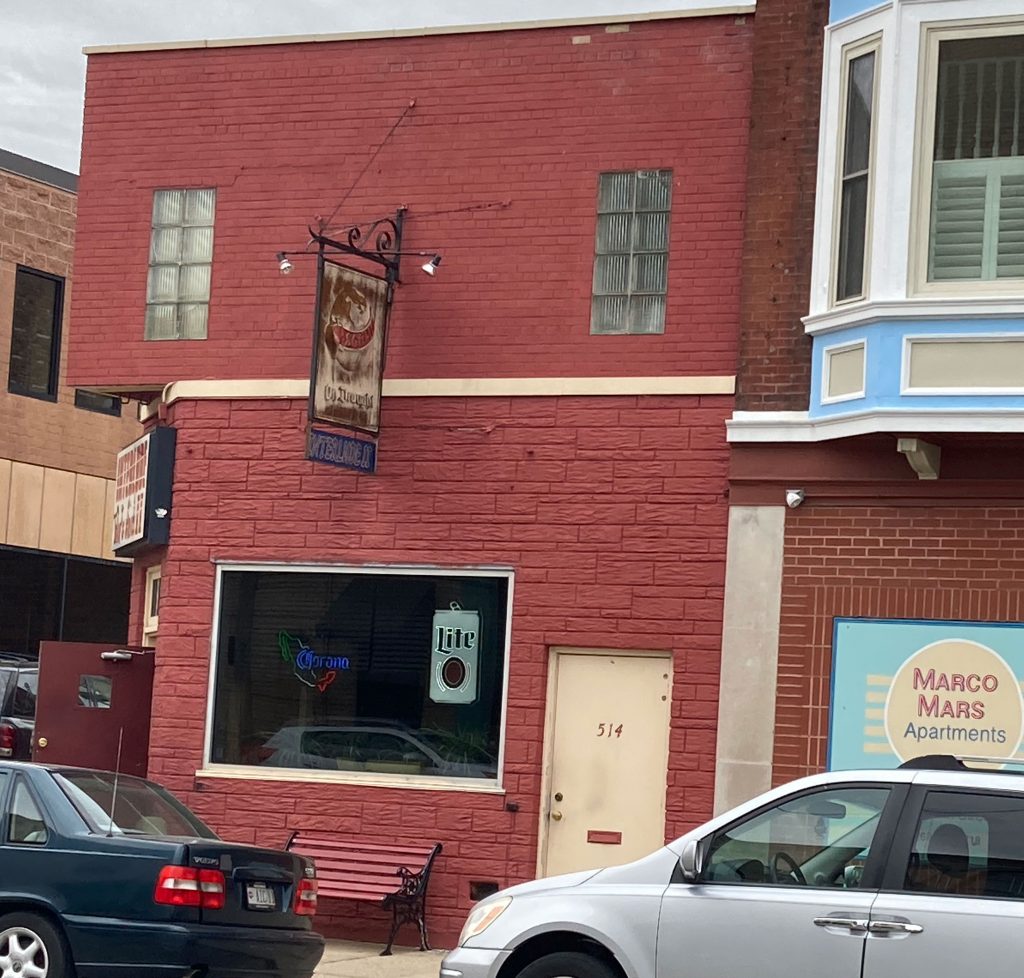
Next up is 512. Originally built in 1908 as the Hotel Orth, this building still stands. The facility was renamed the Hotel Miller in 1931 and later the Badger Hotel in 1939. The latter operated thru 1969 and is currently the Marco Mars Apartments.
The 506-510 storefront, now Kaiser’s Pizza, used to be three separate addresses, with the original building dating to 1908. The 510 address, on the west end, housed Rymkewicz’ Soft Drinks in 1931, prior to the end of Prohibition, followed by Minkowski’s Tavern later in the 1930s, Bernard’s Tavern in the early-1940s, Stan’s Tap Room in the late-1940s and Nudi’s Tavern in the 1950s.
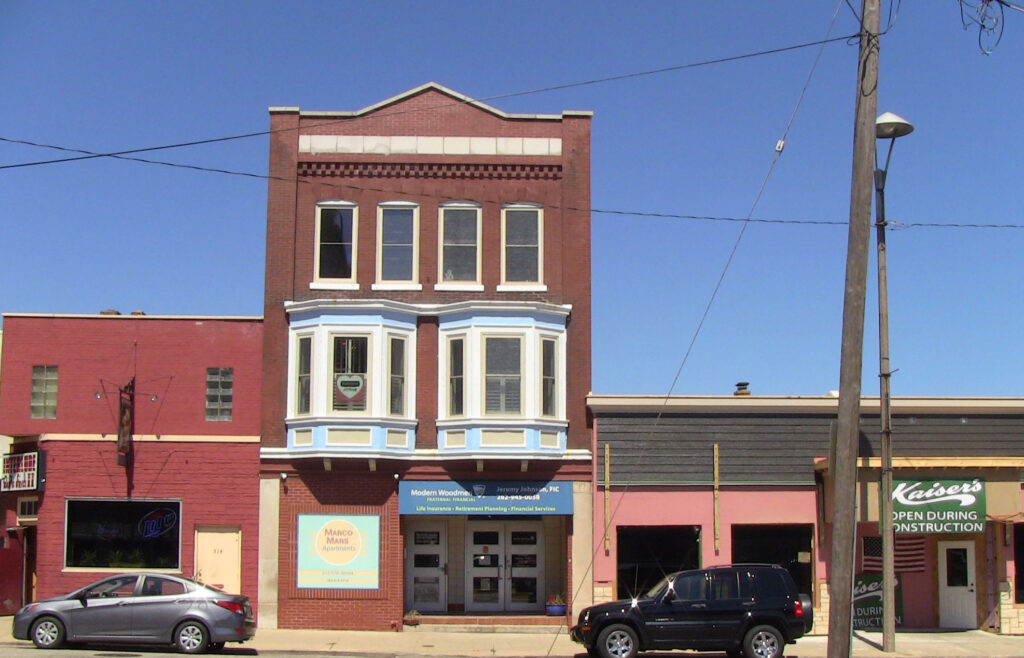
The 506-08 portion of the building, on the east end, has more history. Schulz Hardware was there from 1906 to 1916, followed by Dewey Hardware in 1918, Marshall’s Soft Drinks in 1929 and Carstensen’s Cigars in 1931. At 508, Capelle’s Restaurant operated from 1921 to 1929, Robert’s Restaurant in 1931-32, Jim’s Restaurant in 1941, medical offices in 1950 and My’s Cocktail Lounge in 1954 (later My’s Restaurant and Feast Fair).
Whey Chai took over both the entirety of 506-510 in 1987 and operated it until the early-2000s before Kaiser’s opened in 2008. Whey Chai still runs another restaurant in downtown Zion, Ill.
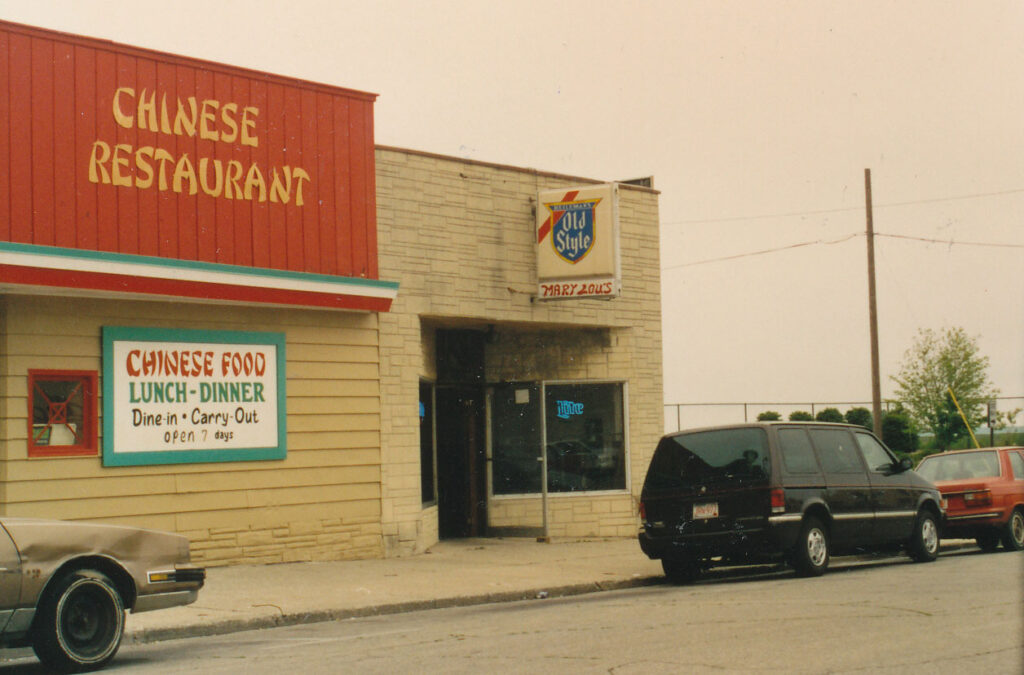
The last building on the block, 504, housed several garages and auto repair places in the 1920s, followed by Ziehen’s Cigars in 1925, Peter Rhode’s Shop from 1929-31, Murphy’s Bikes in 1937, Hagarty Motorcycles/Accurate Engineering in 1947 and the third iteration of Schmitt Brothers Tavern. Schmitt Brothers holds some kind of Kenosha record for longevity. Except for eight or so years out of business during Prohibition, the tavern was open from at least 1905 to 1989 when it finally closed, an astounding total of 86 years, including 35 years, 1954 to 1989, at 504 57th Street.
Schmitt Brothers morphed into the Mary Lou’s Bar in the mid-1990s, the Edgewater Tavern in 1996 and a tequila bar with a mixed reputation in the mid-2000s. Today, it’s an addition to Kaiser’s Pizza at 506-10 with a remodeled front to give both buildings a unified look.
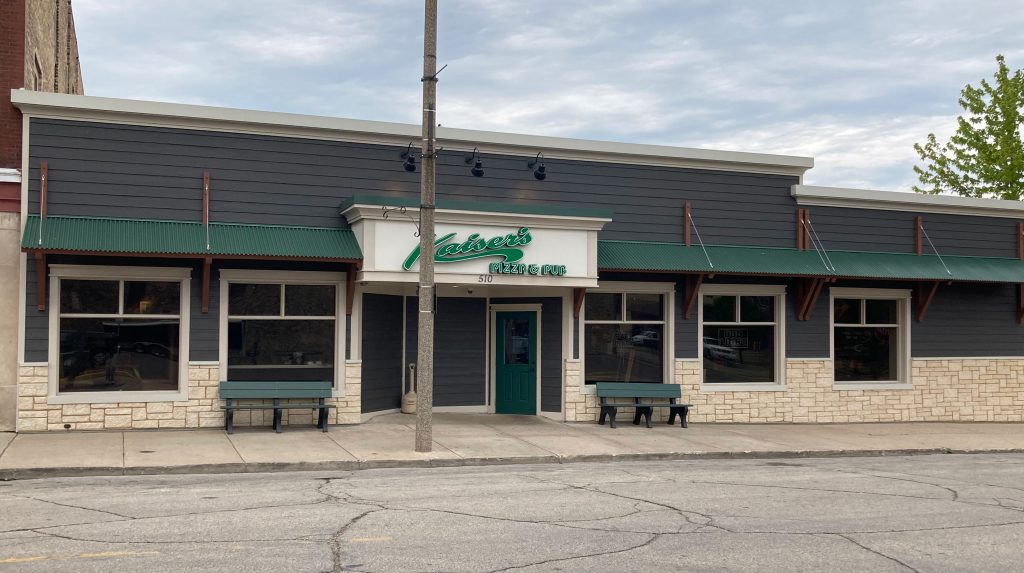
Now we go around the block to the north and then turn left back toward Sixth Avenue. What you see now is a city parking lot to the rear of Wine Knot, but there used to be two buildings here facing 56th Street. The first one was 507-511. There is precious little information available about that structure, but the building has an unofficial construction date of 1900.
The storefront at 507 housed Cameron’s Drugs in 1906, the Union Dye Works between 1910-12 and Interstate Sales in 1916. The front at 509 housed Haubrich Shoe Repair from 1920-25, Christ Tires between 1927-29, Ostenzi Soft Drinks in 1931, DeLucca Soft Drinks in 1933 and the Winn Shoe Repair from 1947-50.
The 511 storefront housed Beyer Fisheries in 1906, Wallig Sheet Metal between 1908-10, Goodyear Shoe Repair from 1912-18, Jacob Marks Tailor from 1920-25, Peter Kuchma Restaurant between 1927-33, the State Lunch in 1937, Trojak’s Restaurant in 1941, Damoth & Tappa Restaurant in 1947 and the Gateway Cafe Restaurant in 1950 (a predecessor of the current café on 30th Avenue, perhaps?).
There are no city directory listings for the 507-511 building after 1950, so the structure was probably vacant for some time. According to city assessor overhead images, the building came down sometime between 1970 and 1975.
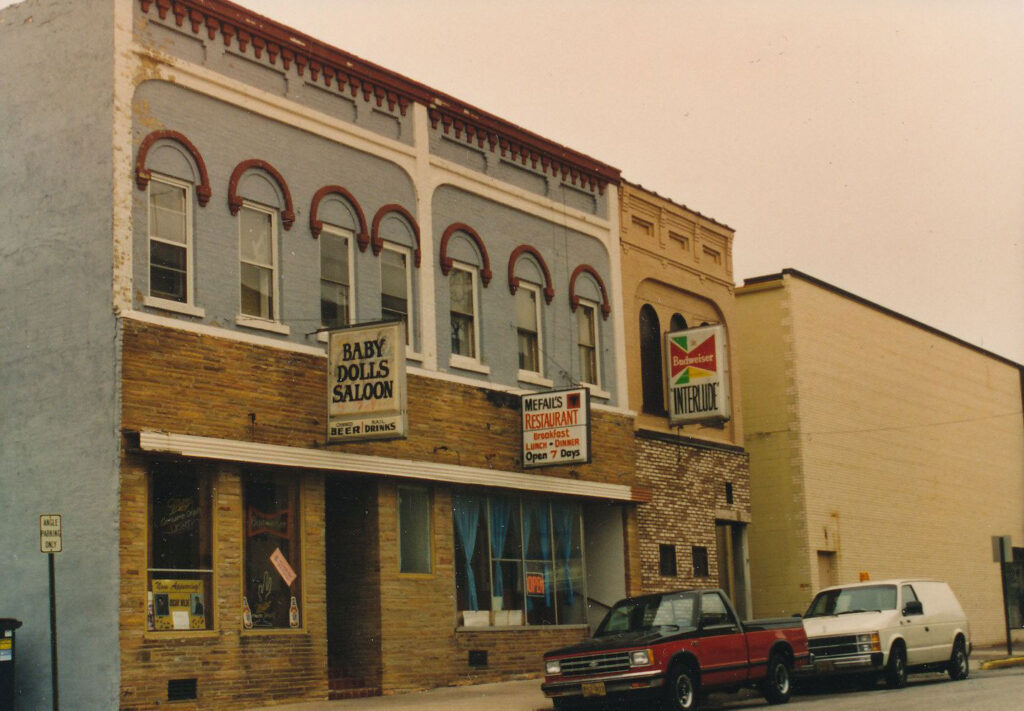
The last building on this tour, 513-17, can be better documented, since I have a picture from 1998 or so. Unofficially, the building was constructed in 1873. The 513 storefront housed the Wisconsin Telephone Company in 1906, Plous Dyers in 1908, Yung Barber in 1910, Loeffler & Weinholz Tailors in 1912, Pfennig Real Estate from 1916-21, Baldwin Coal for 10 years from 1923 to 1933, Columbia Janitorial Supply in 1941, Koos Barber between 1947-50, the Beauty Mart Beauty Shop in 1956, Judy’s Hair Care in 1979, Novie’s Bar in 1987 and lastly, Baby Dolls Saloon from 1996 to 1999 when the building was razed.
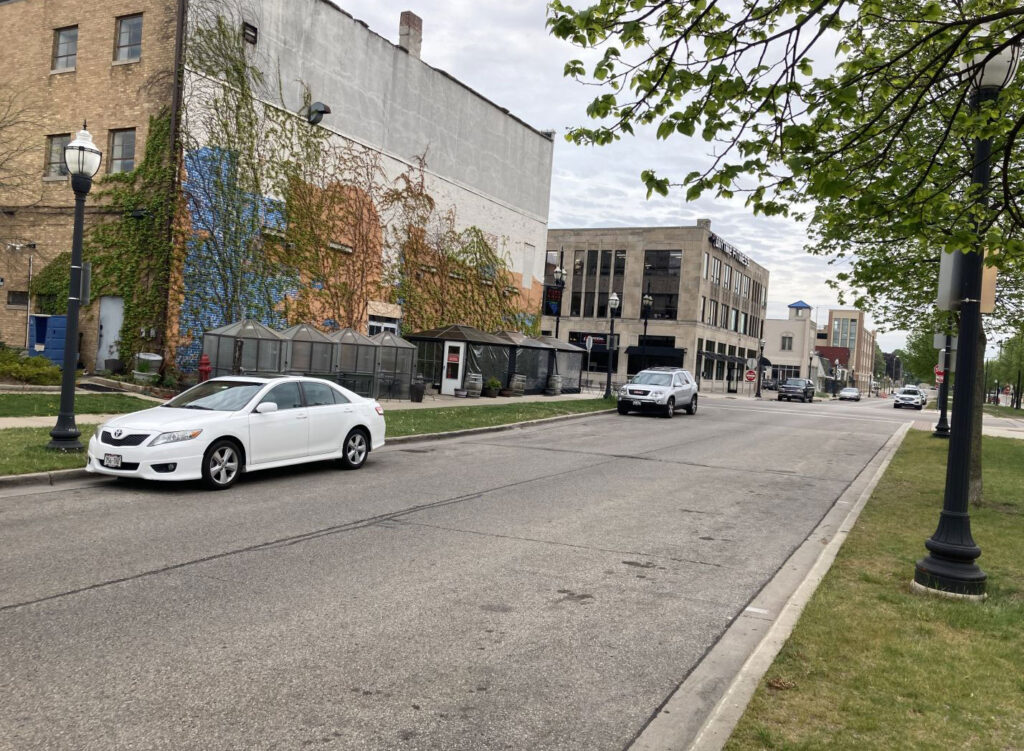
The 515 front was used by Pfennig Grocery between 1906-23, Bauman Hardware in 1927, Kenosha Radio between 1929-31, Sherwood & Porter Used Merchandise in 1933, Kenosha Citizens & Loan in 1937, LaMar Pizzeria in 1954, Mario’s Restaurant in 1959, Bosco’s Italian Village Restaurant in 1972, Pehlivan’s Restaurant in 1975, the Kenosha Restaurant in 1979 and finally, Mefal’s Restaurant from 1987 to 1999.
At 517 was Miller’s Saloon in 1906, Ritter’s Saloon from 1908 to 1916, Boden’s Saloon in 1918, Meyer’s Auto Supply in 1920-21, Michael Kitz’ Restaurant from 1927 to 1933, the Last Round Up Tavern in 1937, Robsel’s Tavern in 1941, Tom & Gix’s Tavern in 1947, Hugh’s Tavern in 1950, Sam & Ida’s Tavern in 1954, Verna’s Tavern in 1959, Sorbie’s Bar in 1962, Little Bill’s Tavern in 1966, Dino’s Tavern in 1969, the Pussycat Lounge in 1972 and lastly, the Interlude Tavern from 1975 to 1999.
Acknowledgements
Special thanks to Jonathan Mertens at the Kenosha History Center for his invaluable assistance and to the Kenosha History Center for period photos
Thanks to Virginia Taylor’s “Lepp, Greenberg Dickelman Losses Set at Half-Million” in the Jan. 31, 1963 Kenosha News
